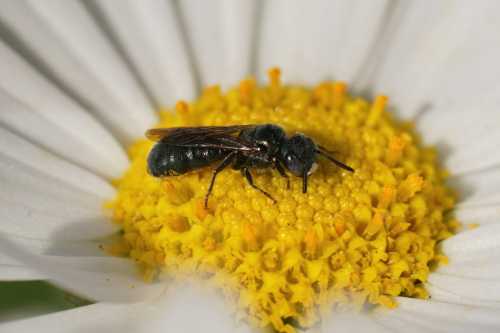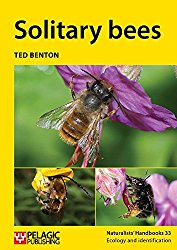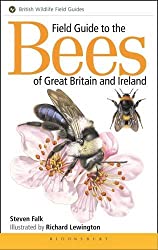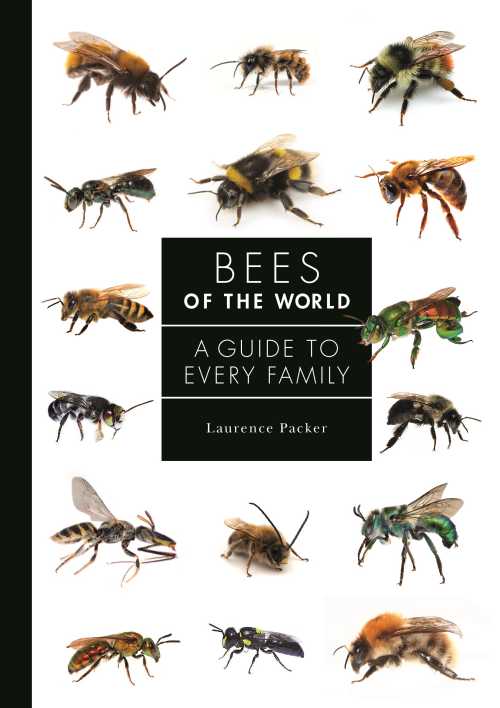Ceratina - Small Carpenter Bees
According to Wilson & Messinger-Carril, the term Ceratina comes from the Greek, meaning 'horned'1.
For the scientist (Latreille in 1802) who gave this genus its name, 'horned' was felt to be a fitting description, since the antennae of the male specimen reminded him of horns.
About Ceratina - Small Carpenter Bees
Ceratina belong in the Apidae bee family, along with the large carpenter bees of the Xylocopa genus to which they are related2.
This is a large, cosmopolitan genus with 366 described species around the world3.
In North America, 22 species are known1 and 1 species is currently found in Britain (Ceratina cyanea)2.
What do Ceratina bees look like?
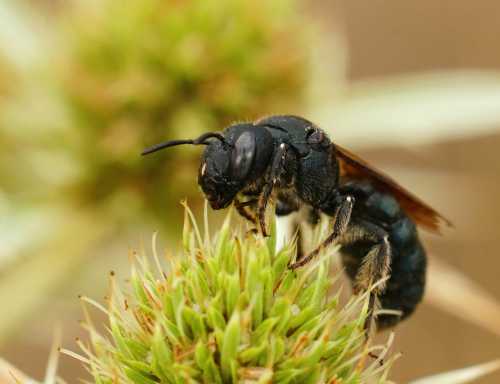 Ceratina chalcites female on Field Eryngo, Eryngium campestre
Ceratina chalcites female on Field Eryngo, Eryngium campestreCeratina are small to medium-sized bees (measuring 3 - 15 mm long4), are shiny dark, black or metallic bees, and are practically hairless.
Males of many species have white markings on the face.
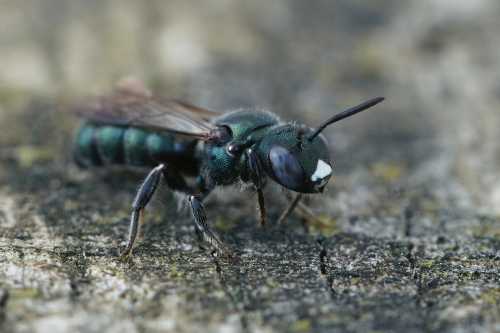 Little Blue Carpenter Bee, Ceratina cyanea male
Little Blue Carpenter Bee, Ceratina cyanea maleMating behaviour
The females of some species mate with multiple males and can store sperm for some time in the spermatheca.
However, unusually, some Ceratina are able to lay eggs and rear females without actually mating. This phenomenon is called parthenogenesis1,2.
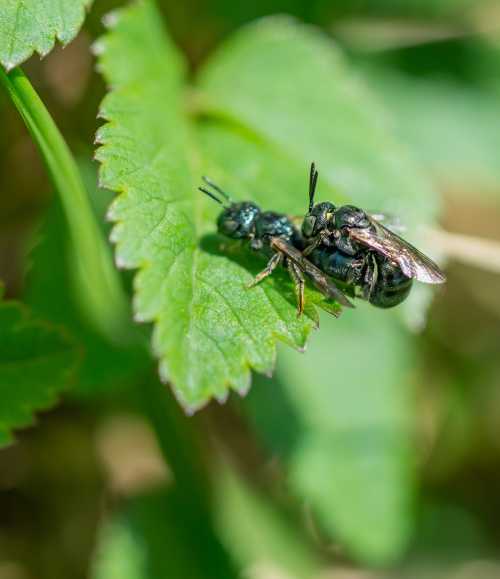 Small Carpenter Bee, Ceratina mating
Small Carpenter Bee, Ceratina matingIn most other species, bees that produce eggs without having mated, can lay eggs that will hatch only into male, and not females. (See Do bees have X and Y chromosomes?).
Ceratina dallatoreana and Ceratina acantha are known exceptions, and are parthenogenic in some geographical regions1. Both species are able to produce male and females without mating1.
Nesting habits Of Ceratina
Ceratina are unable to chew their way through hard outer wood. They typically nest in hollow twigs or twigs with a soft pith (such as teasel, raspberry, elderberry or brambles) or in old wood.
Individual nest cells are created in each burrow and are provisioned with pollen and nectar.
Interestingly, different species of Ceratina may nest in the same vicinity1.
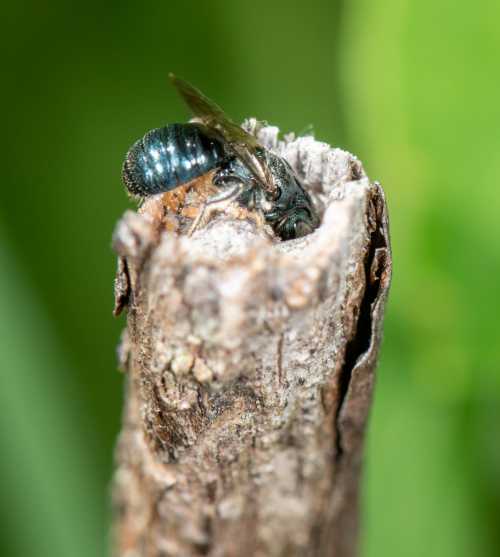 Female Small Carpenter Bee, Ceratina at her nest.
Female Small Carpenter Bee, Ceratina at her nest.Some Ceratina show primitive signs of sociality or are eusocial1,2.
Species such as the Little Blue Carpenter Bee, Ceratina cyanea adopt a solitary nesting habit.
A female establishes a nest, perhaps in a hollow twig of brambles, roses, or other suitable vegetation. She then provisions the nest herself, as well as performing any guard duties.
However, at least one Ceratina species (Ceratina nigrolabiata), practices biparental rather than solitary care.
A study of Ceratina nigrolabiata has shown that males inhabit nests and perform guard duties5. For example, Ceratina nigrolabiata males have been shown to prevent ants from entering the nest.
Because the males perform guard duties, the females are able to focus on foraging for food.
The males themselves are rarely the fathers of the offspring they are helping to protect. They will also move on from a nest and be replaced by another male, but males that stay around for longer have an increased chance of paternity.
The female mates with multiple males and stores sperm.
Foraging Habits
Small carpenter bees are polyectic, and therefore may be seen visiting a range of different flowers from a variety of plant groups for gathering pollen.
They are also generalists when gathering nectar.
References
1. Wilson & Messinger-Carril; The Bees In Your Backyard, Princeton University Press 2016.
2. Field Guide to Bees Of Great Britain And Ireland by Steven Falk, Bloomsbury 2015.
3. Salarian, Mehdi & Nadimi, Ahmad & Talebi, Ali Asghar & Radchenko, Vladimir. (2016). A survey of the genus Ceratina Latreille (Hymenoptera: Apidae) in northern Iran, with three new records. JOURNAL OF INSECT BIODIVERSITY AND SYSTEMATICS. 02. 143-154.
4. Moussa, Mohamadou & Esaïe, Faïbawa & Sanda, Mazi. (2022). Pollination Efficiency of Ceratina cyanea (Hymenoptera: Apidae) on Helianthus annuus (Asteraceae) Flowers at Dang (Ngaoundere, Cameroon). Open Journal of Ecology. 12. 66-80. 10.4236/oje.2022.121004.
5. Mikát M, Janošík L, Černá K, Matoušková E, Hadrava J, Bureš V, Straka J. Polyandrous bee provides extended offspring care biparentally as an alternative to monandry based eusociality. Proc Natl Acad Sci U S A. 2019 Mar 26;116(13):6238-6243. doi: 10.1073/pnas.1810092116. Epub 2019 Mar 11. PMID: 30858313; PMCID: PMC6442561.
Bees Of The World - Book Review
If you found this page helpful or interesting, I'd really be grateful if you would share it with others - if not this page, perhaps another, such as Gardening For Bees.
Thank you so much :) .
